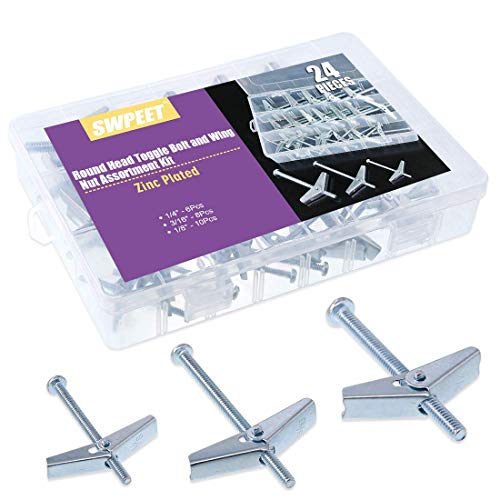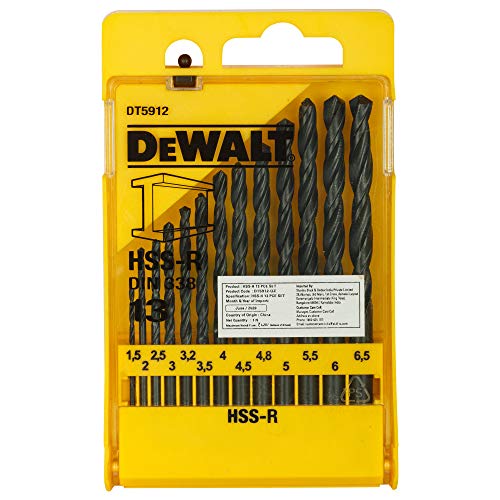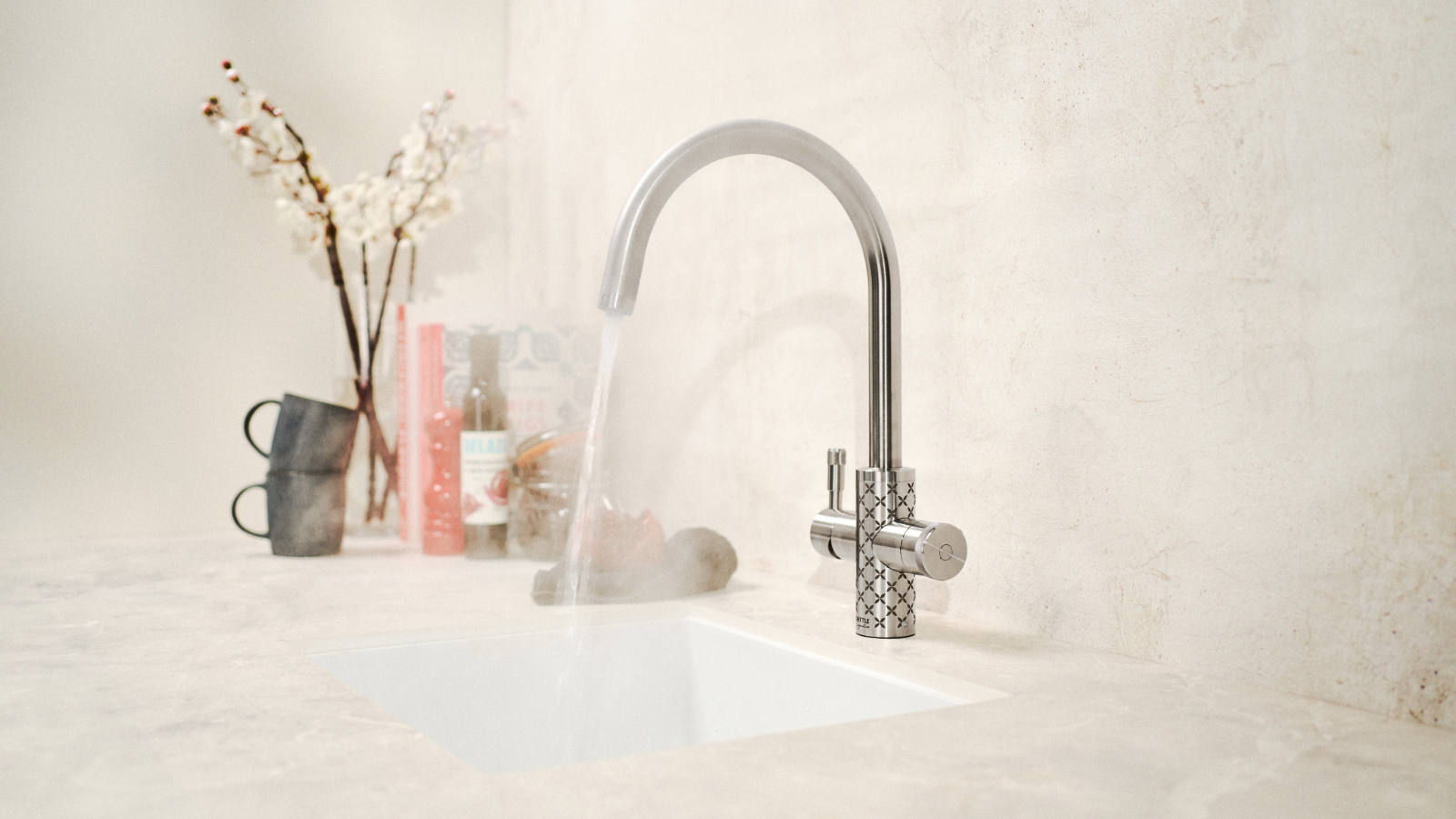Master drilling into plasterboard to prevent cracks and damage for clean holes
Drilling into plasterboard sounds like a simple exercise, but it's not as straightforward as you think. Here we tell you how to get it right

Plasterboard isn’t as strong as brick and plaster, so you need to ensure that when drilling into plasterboard, you’re doing it correctly. Get it wrong and you could be left with the contents of shelves, pictures or even a broken TV scattered across the floor.
But it's not just the failure of even the best plasterboard fixings that you need to think about. Before you even get that far, you need to check that there is nothing dangerous lurking behind walls. Dot and dab plasterboard and stud walls have space behind the board where electrics and plumbing run. However, don’t panic – with this guide, you’ll learn how to drill safely and effectively into plasterboard.

Mark has over 20 years of experience in the building sector, leading to a wealth of knowledge surrounding building and renovating that he enjoys sharing with others who are looking to complete their own building projects.
How to tell if a wall is plasterboard
Before drilling into a surface, the first step is to determine the material it consists of. Typically, it will be plaster or plasterboard. It’s essential to make the distinction, as drilling into plaster and plasterboard needs two very different approaches.
Mark Irving, Building expert at Build & Plumb, suggests a simple, tool-free approach: “Plasterboard is a non-load bearing wall that is made from a board material and supported by a wooden framework. Therefore, when knocked, plasterboard walls make a hollow sound.”
Kevin Keen, owner of Keen’s Buildings, suggests a couple of other options: “A quick check is the pushpin test: press a pin, and if it slips in easily, you are on plasterboard because it is softer than plaster.” He adds, “Tapping in a small thin screwdriver will often pop through and feel empty behind, whereas plaster over brick fights you the whole way.”

Kevin has been in the construction industry for 25 years and handles everything, from the distribution and installation of portable structures to financing and manufacturing. He can speak with authority on every aspect of building.
Recommended tools for drilling into plasterboard
Can I drill straight into plasterboard?
The simple answer is yes, but you will need to follow some simple steps as Nick Ee, product and training manager at BLACK+DECKER, shares, “While it’s safe to drill straight into plasterboard, there are a few sensible precautions to take to ensure safety as modern walls often have electrical cables or plumbing behind them.”
He adds, "I recommend using a stud, pipe and wire detector to help avoid any hidden hazards. These devices can quickly and accurately locate cables, pipes and studs, ensuring that you’re drilling in a safe zone.”
Bring your dream home to life with expert advice, how to guides and design inspiration. Sign up for our newsletter and get two free tickets to a Homebuilding & Renovating Show near you.
Ee adds a note of warning and suggests what you should avoid: “When drilling into plasterboard, you should never insert a screw directly into plasterboard without a fixing, as the board isn’t structurally strong enough to hold the weight on its own.”

Nick has over 10 years of experience working in the home improvement industry. Before joining BLACK+DECKER, Nick was self-employed, running his own van loaded with tools. Through this, he has gained a wealth of practical experience in residential construction and gardening.
4 tips for drilling into plasterboard
1. Add masking tape
Choosing the right drill bit helps create a clean hole that won’t crack the plasterboard, but in addition, Irving suggests the following: “It can be helpful to place a small strip of masking tape over the area you are drilling. This provides a compact and strong surface when drilling, so the plaster remains in place.”
2. Drill slowly
The speed you drill at is essential, shares Irving, “It’s important to drill slowly and not apply too much pressure to avoid cracks”. Keen adds, “Run the drill at low speed with a sharp bit and let the tool cut instead of forcing it.” Ee says, “The key is control and precision. I suggest using a cordless drill (like the BLACK+DECKER 18V combi drill from Amazon), which is ideal for drilling into plasterboard as it offers variable speed settings and good torque control.”
3. Choose the right drill bit
In reality, you can use whatever drill bit you have available, but this isn’t recommended. It can lead to a hole with rough edges, cracks in the plaster and blunt the drill bit. Irving says, “A multi-purpose drill bit is typically fine for drilling into plasterboard, as this is designed to drill into a range of different materials, from wood to plaster.” He warns, “However, it’s important to avoid using masonry drill bits at all costs, as they are too strong and will damage your plasterboard”.
Keen suggests, “Another option is to use a stepped bit so the entry stays neat and the exit does not blow out.” He adds, “Clear dust as you go to keep the bit biting cleanly. Patience and sharp tooling beat brute force every time.”
4. Drill the correct hole size
The right size hole is key when adding a fixing, as Keen shares, “Keep it as small as the fixing allows, usually 3 to 8 mm for standard anchors. Bigger holes weaken the sheet and demand spreader-type anchors to compensate. Size up only when the hardware demands it."
FAQs
What do I need to hang heavy objects on plasterboard?
TVs and shelves are two common objects hung on a wall. TVs weigh around 10-20kg, while a shelf with books can easily weigh 25kg, so you need a fixing that is capable of holding the weight. Irving says, “Toggle bolts are recommended for use in plasterboard walls if you’re looking to hang heavy objects, like TVs or bookshelves.”
He adds, “These provide a reliable and secure anchor as they have a spring-loaded toggle that expands behind the wall, with wide wings that distribute the weight evenly”.
But make sure to check the maximum load of the fixing. Toggle bolts are typically suitable for up to 20-30kg. Alternatively, use a more specialised fixing, such as the Bullfix TV Mounting Kit from B&Q. This claims to hold up 116kg, but there are caveats; it should still be fine for your TV.
Alternatively, Ee says, “The safest approach is to locate a stud with a stud finder and fix the item directly to the timber frame behind the plasterboard. This offers the strongest anchor point and can hold heavy items without damage.”
Can I use traditional Rawl plugs in plasterboard?
Traditional plaster walls with brick or block behind the plaster typically use Rawl plugs to hold any weight, such as TVs or shelves. But they are not a good choice for plasterboard. They simply don’t provide the grip, as Irving explains, “If you use a rawlplug in a plasterboard wall it will likely become loose over time.” Keen adds, “Those plugs rely on friction in solid masonry, not in a paper-faced core. Plasterboard cannot grip them tightly enough, which results in spinning plugs and damaged holes.”
Irving points out the simple alternative is to use specialist fixings: “It’s important to use specially designed plasterboard wall plugs, as these plugs provide added strength for a secure fixing”.
If you have plasterboard walls in your home, it's essential to know how to care for them and what you can do with them. If you have bare plasterboard in a bathroom, check out our Tiling onto plasterboard guide. If you have bare plasterboard anywhere else, make sure to read our Can you paint straight onto plasterboard guide. Finally, if you damage or have small holes, learn how to Fill holes in plasterboard with our guide.
Steve Jenkins is a freelance content creator with over two decades of experience working in digital and print and was previously the DIY content editor for Homebuilding & Renovating.
He is a keen DIYer with over 20 years of experience in transforming and renovating the many homes he has lived in. He specialises in painting and decorating, but has a wide range of skills gleaned from working in the building trade for around 10 years and spending time at night school learning how to plaster and plumb.
He has fitted kitchens, tiled bathrooms and kitchens, laid many floors, built partition walls, plastered walls, plumbed in bathrooms, worked on loft conversions and much more. And when he's not sure how to tackle a DIY project he has a wide network of friends – including plumbers, gas engineers, tilers, carpenters, painters and decorators, electricians and builders – in the trade to call upon.




